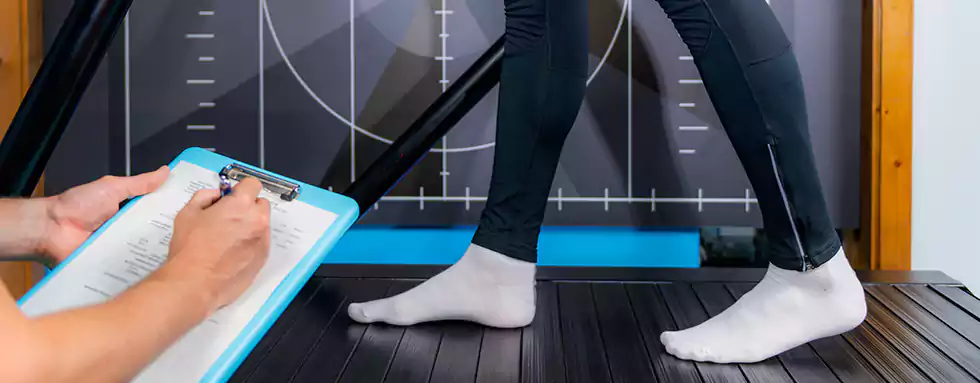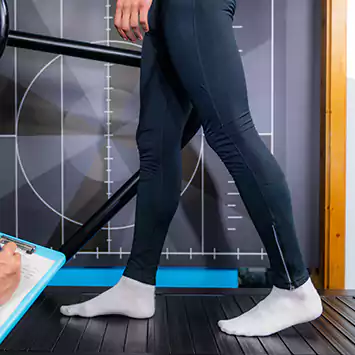Balance and Gait in Atoka

Tackle Balance and Gait Issues in Atoka
Do you freeze mid-step terrified to complete a turn fearful of falling? Or does simply standing to reach a kitchen cabinet cause the room to suddenly spin uncontrollably? You are not alone. Millions suffer balance challenges impacting confidence and independence instrumentally directing rehabilitation. The specialized neurological physical therapists at McMahon Physical Therapy facilitate life-changing mobility improvements for people battling equilibrium and stability issues stemming from the inner ear, brain, or nerve-based diseases through tailored treatment plans fully customizing interventions to meet patients’ unique symptom profiles and activity goals.
What Disorders Commonly Disrupt Balance and Walking?
Multiple intricate structures spanning from the inner ear up to brain motor control centers coordinate to execute smooth balancing reactions and rhythmic alternating gait sequences. Dysfunction at one or multiple points along this network disrupts stability desperately needed to prevent falls.
Some frequent balance disorder causes include:
- Parkinson’s Disease – Gradual loss of dopamine-releasing neurons causes worsening rigidity/bradykinesia
- Stroke – Loss of nervous system pathways coordinating symmetrical movement arising suddenly
- Multiple Sclerosis – Damage to nerve fibers alters messaging critical for motor planning/postural reflexes
- Traumatic Brain Injury – Concussive impacts create diffuse axonal signaling dysfunction
Pinpointing specific mobility dysfunctional allows therapists to implement targeted rehabilitation strategies and equipment optimizing recovery potential to maximize independence with walking and equilibrium.
Comprehensive Mobility and Balance Assessments
Clarifying current capability deficits and safety risks guides customized treatment plans reinforcing missing links in each patient’s equilibrium control network through repetition of challenging skills.
- We thoroughly examine factors like:
Gait – Pace, step length, symmetry, endurance, balance reactions - Leg Strength – Test muscular endurance for transitions like standing from sitting predicting fall likelihood
- Assistive Devices – Evaluate appropriate walking aids to remove anxiety improving confidence
- Range of Motion – Identify flexibility limiting positions contributing to catching toes triggering trips
- Medications – Check for drugs with frequent disequilibrium side effects
Careful assessment provides objective baselines so we can demonstrate functional mobility gains in strength, flexibility, stability, and walking pace through our targeted interventions.
Customized Treatment for Enhanced Balance, Walking, and Safety
In contrast to generic physical therapy protocols, our skilled clinicians design customized treatment plans uniquely tailored to address patients’ distinct stability challenges and activity goals by combining evidence-based interventions:
Sensorimotor Retraining Drills – Controlled perturbations in various positions recalibrate failing balance reactions through incremental intensity.
Assistive Equipment – Lasers, weights, and parallel bars build movement pattern confidence and stability through the enhancement of sensory feedback input.
Gait Stabilization Assistants – Forearm crutches, and canes with tips providing wider bases of support assist walking efficiency while minimizing fall risks during uneven surfaces.
Lower Extremity Strengthening – Intrinsic foot muscle exercises, ankle isolation balancing, and quadriceps chair stands to boost coordination.
Endurance Conditioning – Cardiovascular training prolongs walking tolerance windows correlated to community mobility independence.
We continually adjust protocols based on symptoms and progress to maximize outcomes through the consistent achievement of incremental functional milestones.
Why Specialized Therapy Matters for Balance/Gait Disorders in Atoka
Traditional rehabilitation programs taking one-size-fits-all generalized approaches often see protocols fail patients with complex neurological mobility issues. By contrast, our customized, research-backed vestibular and equilibrium deficiency-focused services facilitate superior outcomes:
Reduced Fall Risks – Quantitative gait velocity, coordination, and balance control gains minimize tripping likelihood critical for aging populations through tailored interventions addressing root multifactorial issues.
Improved Navigation Confidence – Ability to maintain stability during head turns, multi-directional transitional movements, and eyes closed reaching drills transfers to navigating busy environments securely.
Enhanced Walking Independence – Smooth, symmetric measured stepping without upper extremity support requirements fulfills a critical facet of community mobility essential for access to social functions and errands enabling self-sufficiency.
Renewed Outlook and Engagement – Embracing progressive calibrations in what’s possible through incremental mobility milestone achievements sustains optimism, hope, and activity engagement despite chronic diseases.
FAQs: Balance and Gait Disorder Questions
What neurological conditions frequently cause walking difficulties?
Spinal cord injury, traumatic brain injury, Parkinson’s disease, cerebral palsy, multiple sclerosis, and stroke often negatively impact gait stability from damage to fiber tracts communicating between coordination processing centers of the basal ganglia region up to descending motor output signals of the cortex and peripheral nerves exiting the spine.
What is the most common gait disturbance issue?
Neurogenic-related immobility frequently produces a wide-based, slow, shuffling pattern with minimal limb elevation and occasional freezing as sensory signals fail to efficiently transmit intact movement sequences from the brain directing muscles to smoothly alternate stepping in a predictive feedforward manner necessary for timely weight shifting and fluent walking.
What factors contribute to imbalance episodes or generally unsteady walking?
Inner ear dysfunction provoking distorted environmental perceptions, neuropathy tingling throwing off proprioceptive feedback essential for foot positioning accuracy, muscle weakness interrupting supporting joint integrity, poor vision-obscuring hazard awareness, and medication side effects all potentially tip the delicate equilibrium balance humans possess making smooth mobility easily disrupted.
Start Reclaiming Your Confidence Today
Don’t endure another day overwhelmed by the unpredictability of debilitating dizzy spells or stumbles derailing your mobility, freedom, and independence. The neurological rehabilitation experts at McMahon Physical Therapy leverage personalized, progressively challenging balance and gait retraining protocols proven to resolve the root causes of equilibrium and stability loss from neurological diseases or aging.
Request an appointment to take control again or call us to speak with a therapist about maximizing your mobility potential through customized vestibular, strength, and sensory integration training today!
About The Author
Ken McMahon ignites movement in patients facing physical therapy. Their dedication unlocks physical potential for a better quality of life. At McMahon Physical Therapy in Atoka, Ken McMahon wields a patient-centered approach, wielding cutting-edge techniques and bespoke care plans to conquer a vast array of physical challenges.
Schedule Your Evaluation in Atoka for Balance and Gait Treatment
Ready to determine if tailored therapy may hold the keys to resolving your lingering mobility loss challenges for good? Call us to schedule an assessment so we can map your pathway to safely walking, turning, and bending again with certainty.
What Causes Back Pain & Nerve Issues?
The intricate spinal anatomy contains layers of delicate structures vulnerable to strain that manifest in painful ways when irritated including:
Herniated/Bulging Discs
- Description: Gel leaking through protective rings presses on nerves, causing irritation and pain.
- Impact: This can lead to radiating pain, numbness, or weakness in the affected area.
- Treatment: Options include rest, physical therapy, medication, or in severe cases, surgery.
Sciatic Nerve Compression
- Description: Tension on the lengthy nerve from the lower spine down the leg, often resulting in sharp pain or tingling sensations.
- Impact: Can cause pain, numbness, or weakness in the lower back, buttocks, and legs.
- Treatment: Physical therapy, stretching exercises, medication, or in severe cases, surgery.
Facet Joint Dysfunction
- Description: Degenerative stiffness/inflammation in joints linking vertebrae, leading to restricted movement and pain.
- Impact: This can result in localized back pain, stiffness, and difficulty bending or twisting.
- Treatment: Options include, physical therapy, steroid injections, or in severe cases, surgical intervention.
Muscular Trigger Points
- Description: Overexertion forms hardened spasmed muscle bands, causing localized pain and stiffness.
- Impact: This can lead to muscle tension, restricted movement, and referred pain in surrounding areas.
- Treatment: Techniques such as massage therapy, trigger point injections, stretching exercises, and relaxation techniques can help alleviate symptoms and prevent recurrence.
Of course most patients present with multidimensional symptoms from various interrelated sources. Our holistic perspective identifies all contributing elements during evaluations so they can be addressed through customized care for lasting relief.
Comprehensive Evaluations
Clarifying the precise generators of symptoms is crucial for effective treatment. Our thorough assessment process aims to accurately classify the primary drivers of your discomfort so we can match appropriate therapeutic interventions for lasting relief.
We will perform a series of orthopedic examinations evaluating factors like range of motion limitations, nerve tension signs, localized pain to palpation, and other system testing. Postural assessments analyze usual standing and sitting positions that may be contributing to misaligned spinal structures and muscular strains. Gait evaluations check for limping or asymmetric stance shifts indicating possible muscular imbalances or side dominance related to the painful area. We also review any relevant advanced imaging detailing spinal joint integrity or disc morphology available.
These quantifiable examination findings allow our team to pinpoint the underlying structures involved and the degree to which they are disrupting balance and mobility. This clarity guides the customization of targeted treatment plans.

Restoring Comfort Through Personalized Treatment
We design customized treatment plans that judiciously leverage various disciplined approaches based on your specific pain drivers and lifestyle factors to alleviate discomfort while also shortening recovery timeframes.
Interventions may include:
- Physical Therapy – Modalities like electrical stimulation relax muscles while targeted exercises strengthen and stretch
- Massage Therapy – Smoothes muscular trigger points and loosens connective tissue adhesion
- Lifestyle Guidance – Coaches healthier patterns related to diet, ergonomics, stress reduction, and activity pacing
With consistent application of the right interventions matched to your unique back pain/sciatica diagnosis, rapid increases in daily function and stamina typically occur. Our supportive team helps guide progression each step of the way towards resumed activity levels.
FAQs: Back Pain & Sciatica in Atoka Answered
What is the fastest way to cure sciatica?
While complete sciatica relief may take weeks depending on severity, chiropractic decompression significantly eases pressure and inflammation on the sciatic nerve typically in just a few visits using gentle positioning assisted by muscle relaxation. Pain decreases quickly.
How do I know if my back pain is actually sciatic nerve pain?
Sciatica shooting pains often feel ‘electric’ down the leg in a path-like pattern including into the foot and toes rather than just sore, stiff muscle discomfort. Specific assessment tests like straight leg raise that recreate these unique symptoms confirm sciatic nerve involvement.
What makes the pain/tingling from sciatica worse?
Actions like extended sitting on hard surfaces, forceful spinal twisting or wearing bulky wallets compressing nerves rapidly intensify sciatica symptoms. Maintaining good spinal flexibility through frequent movement, targeted stretches and posture awareness helps keep symptoms quiescent.
How can I relieve irritation of my sciatic nerve at home?
Top at-home sciatica remedies include applying cold packs to effectively numb acute sore areas, performing nerve mobility exercises like knee pulls into the chest, using ergonomic lumbar cushions, and frequently shifting positions between sitting, standing, and walking to prevent compressed nerve aggravation.
Life-Changing Back Pain Relief in Atoka Is Possible
While back and nerve conditions grow progressively worse without strategic intervention, patients at McMahon Physical Therapy report rapid positive shifts in function, stamina, and pain levels through our personalized, multi-specialty treatment plans designed to resolve the very root sources of spinal and sciatic discomfort at their origin for lasting results. We consider it a privilege to help patients live pain-free and actively again following debilitating back and leg pain challenges. Don’t wait another day before taking the first step toward relief by scheduling an evaluation with one of our caring specialists right away. Let’s eliminate your pain at its cause.
About The Author
Imagine overcoming limitations and regaining your physical strength. Ken McMahon, a licensed Physical Therapist in physical therapy, has helped countless individuals like you do just that. Practicing at McMahon Physical Therapy in Atoka, Ken McMahon believes in tailored care and utilizes innovative techniques to create unique solutions for each patient’s journey.
Start Healing from Back Pain and Sciatica in Atoka Today!
Don’t allow back pain or sciatica to dictate your quality of life and mobility any longer. Take control of your health by scheduling a thorough assessment with McMahon Physical Therapy today to uncover what structural imbalance or muscular strain pattern is provoking your symptoms so we can customize optimal treatment. Call our team to get started today!



